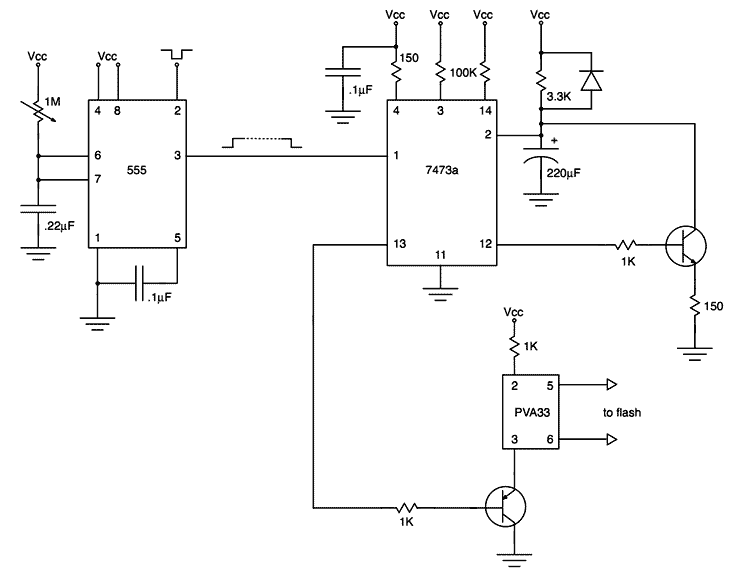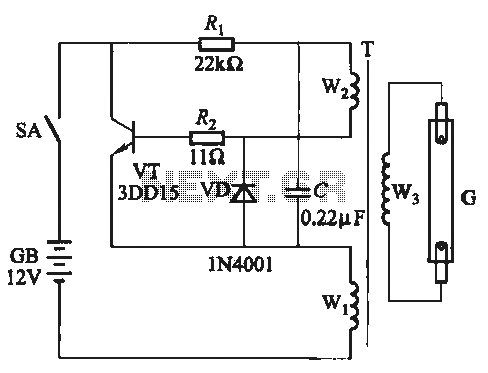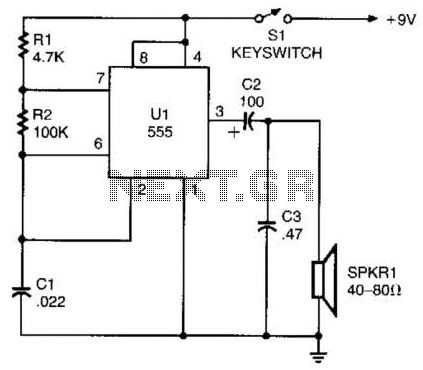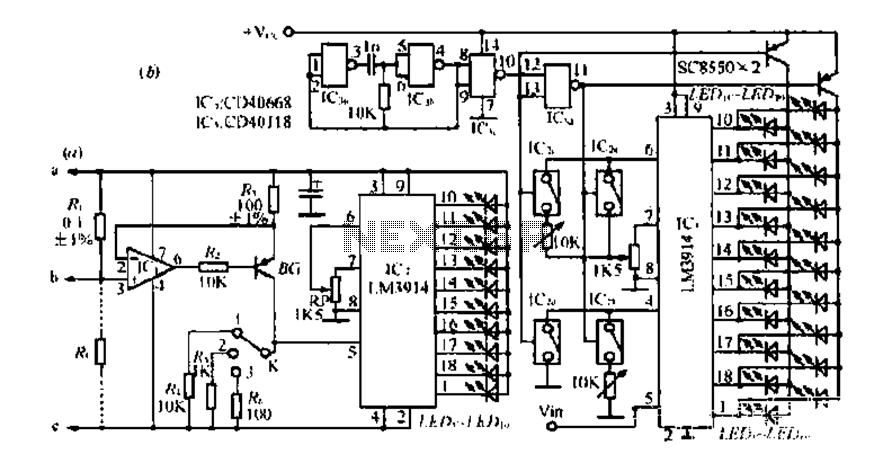
555 IC using a delay circuit of the four b
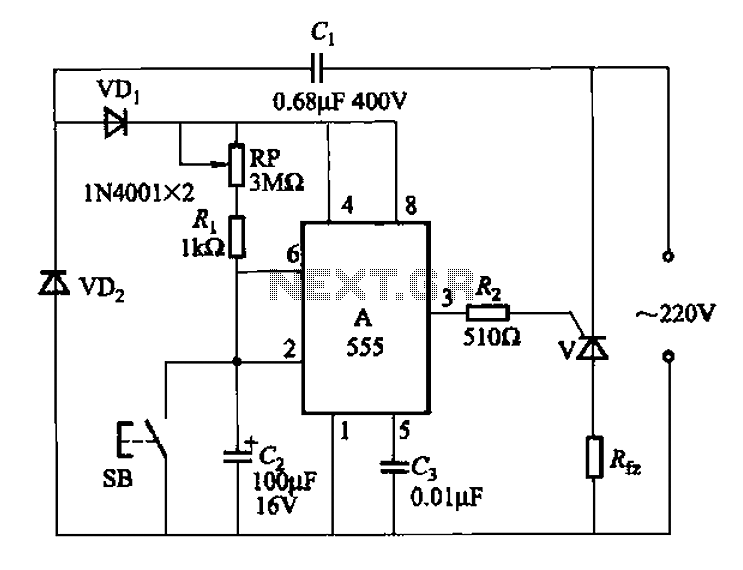
The 555 integrated circuit (IC) is utilized in a delay circuit configuration. It transitions from a high to a low output state when a button (SB) is pressed. The output remains high for a specified delay period before transitioning to a low level. A potentiometer (RP) is included to adjust the delay time. Additionally, a unidirectional thyristor circuit is incorporated to supply the load with half-wave power.
The circuit utilizes the 555 IC in monostable mode, where it generates a single output pulse in response to a triggering event. When the button SB is pressed, it triggers the 555 IC, causing the output to go high. The duration for which the output remains high is determined by the resistor (R) and capacitor (C) values connected to the 555 timer. The delay time (t) can be calculated using the formula t = 1.1 * R * C, where R is the resistance in ohms and C is the capacitance in farads. The inclusion of the adjustable potentiometer (RP) allows for fine-tuning of the resistance, thereby varying the delay time according to the application needs.
Once the delay time elapses, the output of the 555 IC transitions to a low state, effectively turning off the connected load. The load is powered through a unidirectional thyristor circuit, which is designed to conduct current only during one half of the AC cycle. This configuration ensures that the load receives power in a controlled manner, providing efficient operation and reducing the risk of overheating or damage to the components involved.
Overall, this circuit is suitable for applications requiring timed control of a load, such as in lighting systems, motor controls, or other automated processes where a delay is necessary before deactivating the load. The combination of the 555 timer, adjustable delay, and thyristor control creates a versatile and effective solution for various electronic applications.555 IC using a delay circuit of the four b They are a jump from high to low transition of the delay circuit. That button is pressed SB snow, the output is high, after some dela y, the output of the transition to the low level and remain low. Adjustment potentiometer RP, can change the delay time. Unidirectional thyristor circuit, called on to supply the load only half-wave power.
The circuit utilizes the 555 IC in monostable mode, where it generates a single output pulse in response to a triggering event. When the button SB is pressed, it triggers the 555 IC, causing the output to go high. The duration for which the output remains high is determined by the resistor (R) and capacitor (C) values connected to the 555 timer. The delay time (t) can be calculated using the formula t = 1.1 * R * C, where R is the resistance in ohms and C is the capacitance in farads. The inclusion of the adjustable potentiometer (RP) allows for fine-tuning of the resistance, thereby varying the delay time according to the application needs.
Once the delay time elapses, the output of the 555 IC transitions to a low state, effectively turning off the connected load. The load is powered through a unidirectional thyristor circuit, which is designed to conduct current only during one half of the AC cycle. This configuration ensures that the load receives power in a controlled manner, providing efficient operation and reducing the risk of overheating or damage to the components involved.
Overall, this circuit is suitable for applications requiring timed control of a load, such as in lighting systems, motor controls, or other automated processes where a delay is necessary before deactivating the load. The combination of the 555 timer, adjustable delay, and thyristor control creates a versatile and effective solution for various electronic applications.555 IC using a delay circuit of the four b They are a jump from high to low transition of the delay circuit. That button is pressed SB snow, the output is high, after some dela y, the output of the transition to the low level and remain low. Adjustment potentiometer RP, can change the delay time. Unidirectional thyristor circuit, called on to supply the load only half-wave power.
